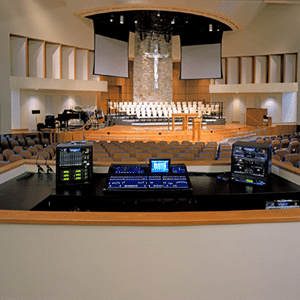
Sound Reinforcement For Technicians
SynAudCon takes a multimedia presentation and an interactive “hands on” approach with this 3-day seminar. Scheduled for Atlanta in March and Dallas for April.

SynAudCon takes a multimedia presentation and an interactive “hands on” approach with this 3-day seminar. Scheduled for Atlanta in March and Dallas for April.

The popularity of ear bud headphones has exploded in recent years, in part because of the better sound they are said to deliver, their easy compatibility with hats and hairstyles, and in no small part from their association with a certain iconic portable music player. But while functional, and some claim comfortable, ear buds don’t really play nice with the structure of our ears. In fact, they may be hurting us.
The Sound Agencys goal is to optimize an organizations BrandSound Led by Chairman Julian Treasure a man passionate about sound and importance and impact of sound in our lives, The Sound Agency has developed models and methods for businesses to improve its results by becoming conscious about its sound.
Julian Treasure is one of few people with three talks on the prestigious TED.com website. We used his Sound Matters talk in a recent interactive white paper.

It would be nice if all a presenter had to do was speak louder to ensure everyone could hear. But it’s rare to find a powerful voice that carries all the way to the back of the room.
If you ask how to improve a presentation, the first suggestion you’d likely receive is “add a graphic or an effect.” As presentation software has improved over the years, the focus on visual elements has eclipsed audio. We’ve been so distracted by cool transition effects that we’ve forgotten to make sure everyone can hear.
There has been a sort of intriguing dichotomous relationship between our hearing “test gear” and our other “test gear”…you know, the stuff that says TEF and HP and Tek on it. There is perhaps a greater dichotomy between those two, together, and the modeling software that’s supposed to make it possible for our hearing apparatus to do its job most proficiently in a way that relates to the outer world.

The battle is almost as old as the church sound system. It has always baffled me that the pipe organ can be played at 100dB, but that when the band plays at 100dB, it’s often “too loud.” We’re not here today to define how loud is “loud enough” or “too loud” for the acoustic volume of your worship service, but to help figure out how much difference there should be between what your congregation hears from the main sound system and what the congregation hears from the monitor speakers, instruments, and amplifiers on the platform, in order to hear the sound system with acceptable clarity.

The American Medical Association reported in August of this year that hearing loss in teens is on the rise. One in five teens is showing some degree of hearing loss according to a new study. This is about 30% from previous reports. With all the education and all the resources available, this is disheartening news.

It is a common misnomer that adding audio to a room will make others in the room hear “better”. While the sound pressure level (SPL) is increased, it does not necessarily make the audio more intelligible especially the human voice and a live microphone. In the past few years, companies have invested heavily in research and development to make the learning environment audibly better. Often times, the nemesis of an intelligible environment are feedback and reverberation. I want to touch on a few items of focus that will make the audio learning experience more enjoyable and give you a few challenges/techniques for improving intelligibility within your room.

Last Wednesday I went to what is called “Enrichment Night” at Entrada, a club I belong to. As the presentation began, the wireless microphone that was used to project the presenter’s voice stopped working. The presenter continued without the microphone. A few minutes later, a new working microphone appeared. The presenter not wanting to be bothered with the wireless microphone asked the participants if they could hear her okay. Obviously, the answer was “yes”. She continued the hour long presentation.
14912 Heritage Crest Way
Bluffdale, Utah
84065-4818 USA
Phone: +1.801.233.8992
Toll-Free: 1.800.330.0891
Office Hours
8:00 am – 5:00 pm MT
Monday – Friday
First, select the calculator type, USA (for Americans with Disabilities Act - ADA), California (for California Building Code), or Australia (for Australia's Disability Discrimination Act 1992). Enter the seating capacity and the number of minimum assistive listening devices required and the minimum number of neck loops will automatically populate based on the calculator type selected.